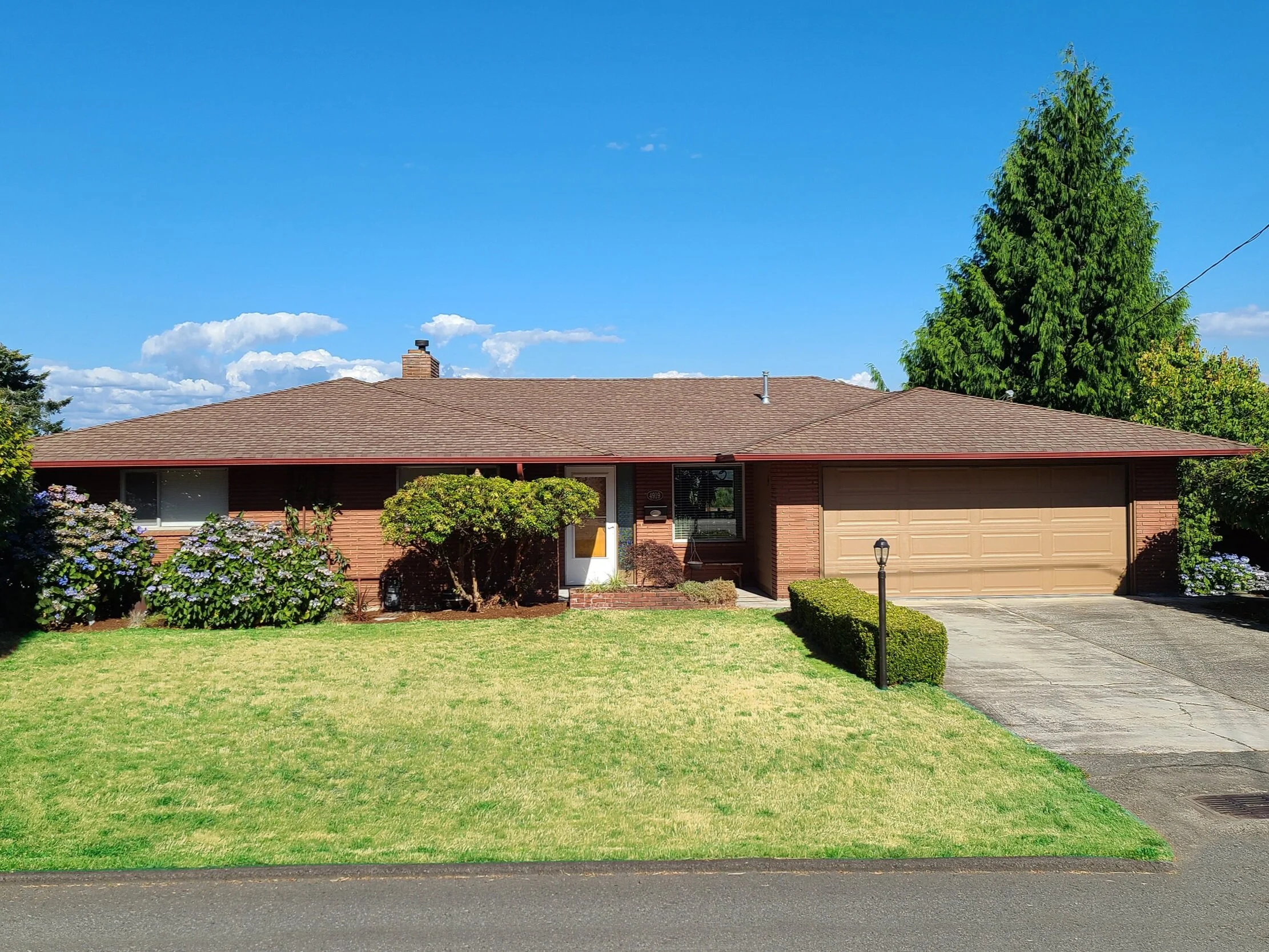Everett Archives: Old Highway 99
Today Highway 99 isn’t used as much as the Interstate. But in its day, “The Pacific Highway” was a sort of Route 66. During the height of car culture in America, it was a prime spot for cruising between Everett and Seattle while stopping for burgers, amusement park thrills, or a drive-in movie along the way.
For many years after it was built, US 99 was the main north-south route connecting major cities along the Pacific Coast States, from the Canadian border at Blaine, WA to Mexicali, CA on the Mexican border.
Before there was Highway 99 there was the Interurban Line that ran between Everett and Seattle. And before that, there was the North Trunk Road. And before that... well, let’s take a look.
The North Trunk Road
First, of course, the area between Seattle and Everett was mostly forest. Then came a few homesteaders. North-south routes began to spring up among these homesteads, connecting to and from the growing port cities of Tacoma, Seattle, and Everett. The North Trunk Road was the first official throughway between the Emerald City and our City of Smokestacks. It’s unclear to me, reading the history, if the “trunk” in the Old Trunk Road refers to logging in the area, or if it’s because it was a main route with “branches” coming off of it.
Traveling by horse-drawn wagon on Snohomish County Road circa 1909 // Edmonds Historical Museum
As the population grew, demand for more efficient transportation also increased.
The Interurban
Parts of the North Trunk Road were incorporated into the route for the Interurban Rail Line. This electric rail system connected Downtown Everett to Downtown Seattle and ran past Silver Lake and Bothell (bicyclists and recreational walkers may recognize the route, because it’s now known as the paved Interurban Trail).
It took an hour and ten minutes to travel from Seattle to Everett on the Interurban; there were about thirty stops. According to an Interurban conductor named Walt Shannon, there was not much along the rail line except trees when the Pacific Highway was completed in 1928.
Conductors ran the last interurban car on Friday, February 20, 1939. The trolly company quickly ripped out the rails; they were eager to get rid of the rail system.
North Trunk Road Circa 1920 // Edmonds Historical Museum
The end of the Interurban came down, ultimately, to money. Conductors, though they were unionized, made 42 cents an hour and had no paid vacations. To make a living wage they had to work seven days a week in nine-hour shifts (or three round-trip journeys between Seattle and Everett). The private trolly company insisted that these wages were too high, that the company was losing money.
Many of the old trolly cars were repurposed as diners -- some of them, ironically, on Highway 99. The Old #52 car became the Bee Line Lunch at 32nd and Rucker. The Old #55 was a cafe on Highway 99 near Madison Avenue. Other old cars were moved and repurposed to places as far as Bellingham, Burlington, Snoqualmie, and Moses Lake.
Highway 99
When the Pacific Highway (commonly known as Highway 99 today) went in, people could ride a bus from Everett to Seattle in about forty minutes instead of the hour and ten minutes on the Interurban.
In its first few years, Highway 99 was traveled mostly by public transportation vehicles -- not only buses, but also privately-rented limousines and “observation coaches” which look like a limo crossed with a double-decker bus... a precursor to ridesharing a la Uber.
The Post-War rise of private vehicle ownership also led to a rapid change in the Highway 99 corridor between Everett and Seattle. The area was quickly developed as businesses sprung up to accommodate passengers. Suburban homes for commuters also sprang from the route.
Stop on the Interurban near Lynnwood // Everett Public Library's Northwest Room
Some local historians today refer to Highway 99 in its heyday as a sort of Northwest Route 66. It went from Tacoma through Seattle to Everett (up through Broadway in Marysville), and beyond.
Car and diner culture also transformed Highway 99 in ways that we still recognize today -- namely by bringing in now-retro Everett eateries like Mikey’s and the Totem Diner. These were family-friendly establishments that were easily accessed by motor cars. Places where you could get a cup of coffee for five cents and eggs done whichever way you like ‘em.
Many of these diners are open, and business signage and vintage buildings from the heyday of Highway 99 still line the route.
Take a cruise down the Pacific Coast Highway and see how much history is still out there!
Thanks for reading! Don't forget to subscribe to our monthly newsletter to stay up to date with community news and real estate tips.
You can head back to the main Lamoureux Real Estate website here.




